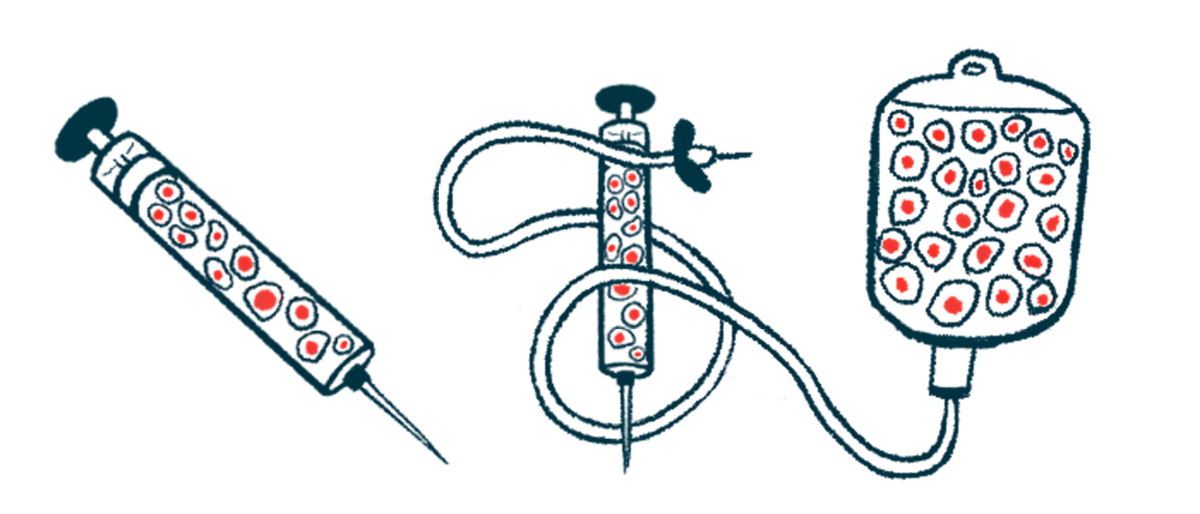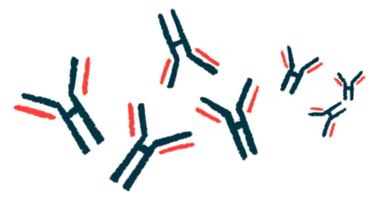Stem cell transplant effective for treatment-resistant MG: Review
89% of patients were in remission or had few symptoms post-transplant

Nearly all adults who underwent a stem cell transplant for treatment-resistant myasthenia gravis (MG) achieved remission or had minimal symptoms that did not require further treatment, according to a small study.
“Studies investigating the efficacy and safety of [stem cell transplant] in the treatment of refractory [or treatment-resistant] MG are warranted,” researchers wrote.
The study, “Refractory myasthenia gravis treated with autologous hematopoietic stem cell transplantation,” was published in the Annals of Clinical and Translational Neurology.
MG is an autoimmune disease caused by self-directed antibodies that disrupt the communication between nerves and muscles. Symptoms can include weakness in the muscles that control the eyes, speech, swallowing, breathing, and limbs.
Therapies that improve nerve-muscle communication and enhance muscle strength, called acetylcholinesterase inhibitors, are often the first-line treatment for MG. Other commonly used therapies include those that suppress the activity of the immune system, such as corticosteroids and non-steroidal immunosuppressants.
Up to 15% of patients continue to have symptoms after taking medications
Despite treatment, up to 15% of patients continue to experience symptoms. Patients with refractory MG (rMG) face a higher risk of complications, including myasthenic crises and death, compared with those who respond to treatment.
“For patients whose disease is not controlled by … therapies or for those who experience intolerable side effects, few treatment options exist,” the researchers wrote.
An autologous hematopoietic stem cell transplant (aHSCT) is an option for rMG patients and is designed to reset the immune system back to a healthy state.
It involves harvesting hematopoietic stem cells, or those that give rise to all types of blood cells, from a patient’s blood or bone marrow. After chemotherapy is used to wipe out the patient’s immune system, the stem cells are returned to the patient to give rise to new healthy blood cells.
A team led by researchers at the University of Calgary, in Canada, retrospectively reviewed the cases of 21 rMG patients who underwent an aHSCT. In all cases, previous treatment with corticosteroids plus at least two additional immunomodulating or immunosuppressive agents failed to provide adequate symptom control.
Patients were a median age of 39 years at the time of diagnosis and 48 years at the time of the transplant. The median time between diagnosis and transplant was four years. Fifteen of the 21 patients (71%) were women.
Review of patients in remission or with few symptoms after transplant
The primary efficacy outcome was the achievement of clinically stable remission (no muscle weakness) or a state of minimal disease manifestations (some weakness) without treatment, which had to be maintained until the most recent follow-up, which ranged from 0.1 to about 22 years.
Three patients, however, were non-evaluable for the primary efficacy outcome: two due to early death and one due to muscle disease complications.
Upon review, 16 of the 18 evaluable patients (88.9%) achieved the primary efficacy outcome. For those who stopped medications after the transplant, the time to discontinuing MG therapies ranged from immediately after the transplant to 5.6 years after.
MG remissions were sustained after the transplant in all patients except in one female patient who developed recurrent muscle weakness within five months. She was eventually diagnosed with Graves’ disease, an autoimmune disease that affects the thyroid gland. While treatment improved her thyroid function, which also improved muscle strength, she continued to experience MG symptoms one year after the transplant.
Another patient in clinically stable remission worsened to a state of minimal disease symptoms, with mild neck muscle weakness arising between four and five years after the transplant, but did not require immunosuppressive therapy.
4 deaths due to causes other than MG relapses
Over the entire follow-up period, four patients died (19.%), all due to causes other than MG relapses. Because two of these occurred within 100 days of their aHSCT (due to respiratory failure and bacterial sepsis), transplant-related mortality was set at 9.5%.
“The toxicity might be better tolerated if patients were treated earlier their disease course … or if the transplant regimen chosen was less toxic,” the team wrote.
The two later deaths were caused by a pulmonary embolism and sepsis at 8.7 years following aHSCT and colon cancer at 9.4 years after the transplant.
Several non-fatal post-transplant complications occurred, including a rare autoimmune disorder called immune thrombocytopenic purpura (low platelet counts) in two patients, low thyroid hormone levels in two, and premature menopause in three.
“Sixteen out of 18 evaluable patients with rMG who underwent HSCT met the primary efficacy outcome …, which was sustained until most recent follow-up,” the researchers wrote. “High-quality, Phase 2 prospective studies are warranted for the evaluation of HSCT as a treatment for rMG.”









Leave a comment
Fill in the required fields to post. Your email address will not be published.